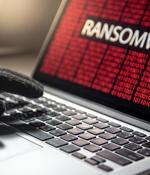Security News

Ninety-two percent of SMB executives said they believe their businesses are prepared to recover from a disaster. "That data suggests that there are either varying definitions of what it means to be able to recover from a disaster or, quite simply, a lack of understanding of what it truly means to be able to recover from a disaster. Make no mistake, if a business does not have a disaster recovery solution in place, or at the very least a solution to back up its data, there is no way it can get the data back from a data loss event."

Nutanix, a leader in enterprise cloud computing, announced several new capabilities in its hyperconverged infrastructure software and AHV hypervisor to protect business-critical applications and maintain continuous business operations in the face of a possible disaster. The new capabilities in Nutanix HCI and AHV help enable customers to confidently deliver mission-critical applications with significantly less complexity and lower management overhead. "Maintaining continuous business operations is a high priority for all types of companies and organizations," said Greg Smith, VP of Product Marketing at Nutanix.

The rampant rise of ransomware persists, with 100% of respondents - who include ITOps, backup, disaster recovery and storage admins, application and workload owners in the U.S. - reporting that their company experienced a ransomware attack in the last 12 months, Datrium reveals. With the evermore heightened threat of ransomware during the COVID-19 pandemic, companies are prioritizing disaster recovery and the cloud is playing a greater role as a disaster recovery site.

Thousands of small business owners reeling from the aggressive measures taken to halt the spread of the coronavirus may have had their personal information exposed last month on a government website that handles disaster loan applications. The Small Business Administration said Tuesday that the personal information of more than 7,000 business owners applying for economic injury disaster loans was potentially seen by other applicants on the SBA website on March 25.

The question now becomes, is backup alone enough, or is full disaster recovery required to mitigate the effect of ransomware? By 'disaster recovery', we mean the full gamut of backing up data, recovering that data, and business restitution without loss of business continuity. A good backup system will allow rapid if not immediate recovery minimizing the loss of data to an annoyance rather than a disaster.

S2 Ep33: Ransomware on sale, dark web disaster, dead drops and pillow forts – Naked Security Podcast
This week we bring you the podcast from our makeshift home studios. We discuss Dharma ransomware, the tour guide who turned out to be a Chinese spy, and why thousands of dark web sites suddenly vanished.

"Data protection can come into play in a wide array of important ways - including data security and encryption, data recovery, email protection and data archiving. It also provides the ability to recover quickly from a disaster, protection from and mitigation of ransomware, and physical device protection. Plus, it can prevent user error," said Reeder. Top executives in education see data backup and data recovery as the most important aspects of data protection.

Join Today The coronavirus may put organizations at risk through short staffing or unavailable workers and services, but disaster recovery and business continuity plans can help sustain business operations. The need for a disaster recovery business continuity plan is becoming more critical as the enterprise adjusts to the business disruptions caused by the coronavirus.

Based on a recent survey of 110 US-based IT decision-makers, US Signal's "2020 State of Data Center Offerings" report cited security and compliance, backup and disaster recovery, and network availability as the top factors when selecting a third-party edge data center provider. Some 42% of those surveyed cited disaster recovery and backup availability as a key factor when evaluating edge data center providers.

Apparently the app was deployed through mobile testing platforms, not the App Store or the Play Store. SEE: Iowa caucus app fiasco: How it happened and lessons learned.